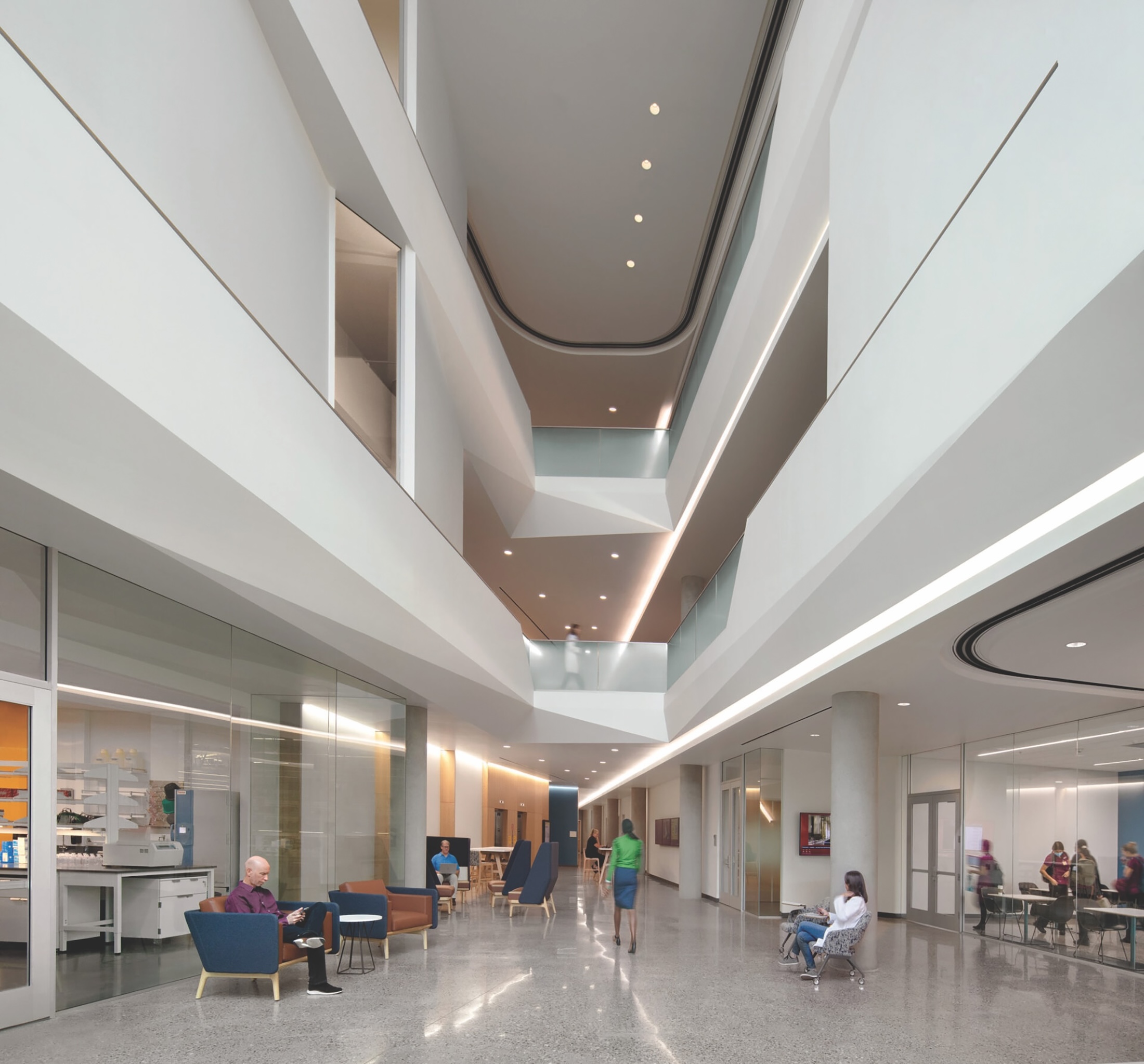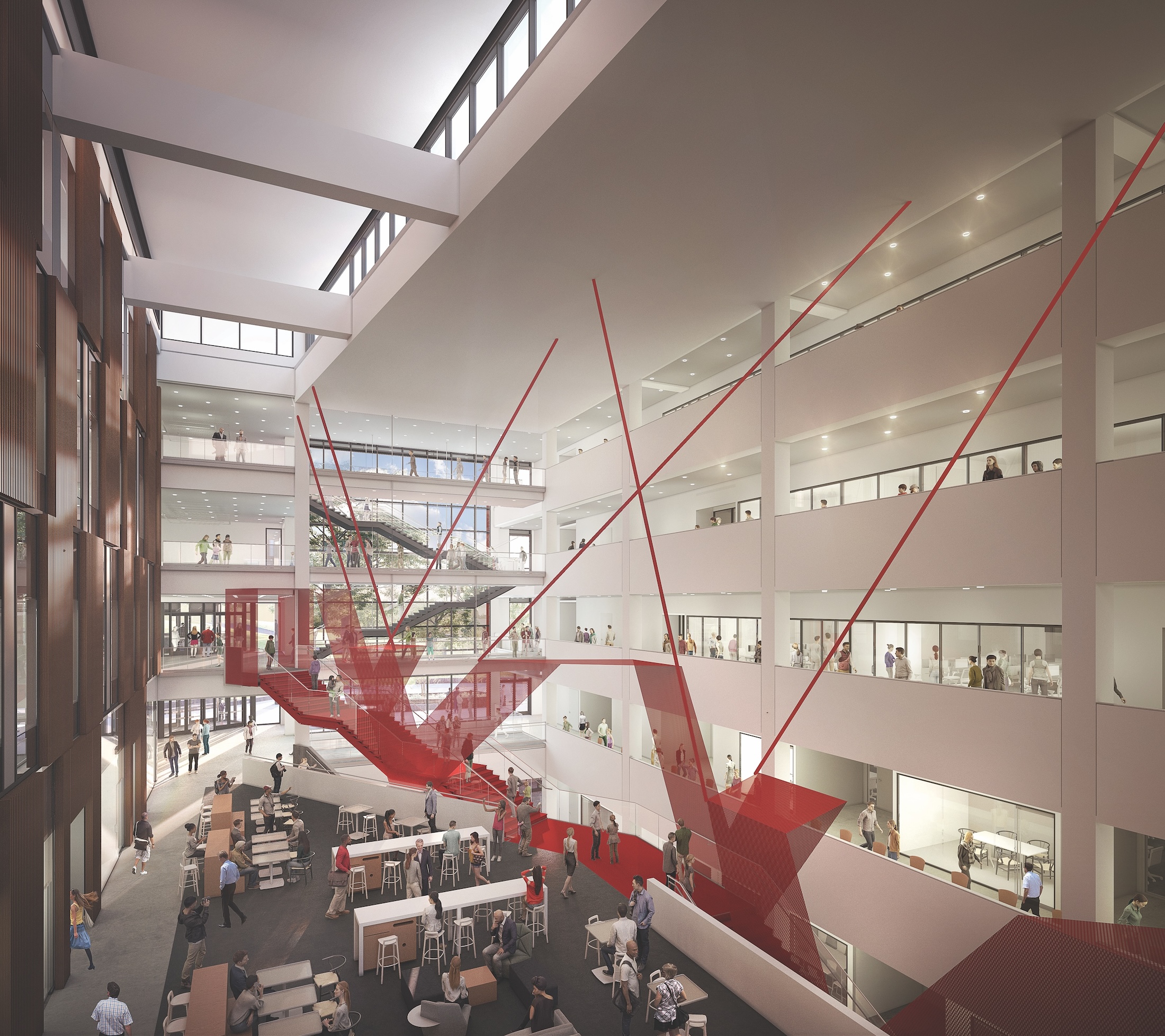Coming out of the Coronavirus-inspired shift in academic learning, many colleges and universities are trying to find ways to attract students back to campus. Will residences, amenities, services do the trick? While they ponder a solution, another issue is burgeoning.
Both public and private academic institutions are evaluating their use of space more than ever. Capital planning, limited available land, and space utilization studies tell them what they need to know: optimization is key. There is a growing desire for buildings that can stand the test of time—ones that offer students something serviceable and special.
Higher education institutions have found a way to hit many birds with one stone. From attracting students, increasing interpersonal engagement, and making the most of pre-existing inventory and land, one design may answer it all: flexible buildings.
Designing Flexible University Buildings
Designing and building flexible university buildings has been a common task among AEC firms throughout 2023. Planning for space that accommodates dynamic programming within 50-year lifecycles is a “universal theme” witnessed this year, according to Greg Fraikor, Higher Education Core Market Leader at DPR Construction. The flexible design of these buildings benefits university leaders and students alike—not only in the way of optimizing space, but also for promoting community, connectivity, and collaboration among end-users. Built to adapt, flexible spaces merge disciplines together in novel ways, something that single-use buildings are not typically designed to do.
Skanska’s Lew Guerrette, Executive Vice President and National Higher Education Advisory Council chair, has seen a trend toward fewer large lecture halls and an increase in labs, multipurpose studios, flexible rooms, and maker spaces. For example, the Rubenstein Arts Center at Duke University incorporates six multipurpose studios that reflect flexibility. Each room can be adapted into an art exhibit, classroom, public program space, and more.
There has even been a slowing demand for traditional libraries, which are being replaced by amenity-driven learning commons facilities, according to Léo Lejeune, LEED AP, Senior Principal and Education Sector Leader with Stantec. These are facilities that not only accommodate the need for quiet study spaces, but also access to technology, group study areas, and dining environments that support large social activities.
While there might not be an official name for these multipurpose buildings, global architecture and design firm Gensler refers to them as an “education ecosystem.” They can be holistic study spaces, cross-college classroom hubs, or even student entertainment and living spaces. One of the rising archetypes, however, correlates to one of the other big trends in higher education planning today: STEM.
STEM University Buildings
STEM buildings like research laboratories, biomedical centers, and health science buildings are the most in demand on campuses. As universities retain a focused interest in STEM learning, even these spaces are being challenged to increase flexibility for students and university partners.
The Architectural Resources Cambridge- and ZGF-designed UMass Chan Medical School’s New Education and Research Building features program and research space—as well as administrative offices, collaboration spaces, and conference rooms. It aims to support all three of the university’s graduate schools with research space that can accommodate more than 70 principal investigators. The flexible space will allow the university to increase class size and open up laboratory space in other campus buildings—aiding in the industry’s appeal for more medical professionals.

“Universities recognize that difficult research problems require multidisciplinary solutions,” says Sam Miller, FAIA, LEED AP, Partner, LMN Architects. As a result, projects that encourage mixing and collaborative research are more common, as are buildings that are flexible and adaptable over time to meet changing needs.
Conversely, firms like Page Southerland Page are seeing a decrease in performing arts facilities and free-standing student unions.
“We interpret this as a pendulum swing due to the interest in STEM core learning … a counterpoint to recent student life-focused improvements luring students to return to campus from our era of remote education,” says Todd Ray, FAIA, LEED AP, Design Director with Page.
While the construction of STEM buildings can be funded in many ways, science buildings are typically the first to be funded by endowments or private donors because of their importance to the university’s future, according to Guerrette.
“When planned thoughtfully, these spaces are designed and built for long-term flexibility, creating interdisciplinary, state-of-the-art facilities,” says Guerrette.
Adaptive Reuse in higher education
With land usage at the forefront of institutions’ minds, capital planning activities like renovations and modernizations are being increasingly considered over new construction. Reusing older single-use buildings into “educational ecosystem” ones can be more economical and sustainable than new construction, according to Gensler Education Leaders Deborah Shepley, AIA, LEED AP, and Mark Thaler, AIA.
“Whether to save money on new construction costs or adhere to seismic building code mandates, adaptive reuse projects are on the rise at colleges and universities,” says Sam Wen, Construction Manager with PCL Construction.
The Stantec-designed New Learning Commons at Kettering University, Flint, Mich., thoughtfully weaves power and technology throughout the building to accommodate alternative configurations. Designing with the future in mind allows spaces to adapt in unforetold ways—even years down the road.
Student Wellness and Student-First Design
Along with the strive to bring students back to campus, projects that emphasize student health and wellness are on the rise in 2023. However, these are becoming more than the stand-alone health centers of the past, according to Chris Purdy, AIA, LEED AP, Vice President and Director of Higher Education, SmithGroup.
“We’re seeing fusion buildings that include mental and physical wellness spaces partnered with other programs—such as housing, dining, recreation, and living/learning—for a more holistic approach,” says Purdy.
The key driver for firms is building a purpose of place. Gensler’s 2022 Education Engagement Index revealed a correlation between students’ relationships with their peers and their perceived success. When students returned to campus post-Coronavirus, the correlation became even more staggering, according to Gensler’s Thaler.
Environments that promote collaboration and community building even lead to student success and retention, according to a College Pulse and Inside Higher Ed survey. Student success centers remain in the conversation as colleges and universities consolidate and grow their resources for students, according to Fraikor.
The LMN Architects-designed Clifton Court Hall at the University of Cincinnati brings together seven academic departments to aid in learning and social engagement. The building will feature a mix of flexible classroom spaces, more than 1,000 classroom seats, and a large community atrium that ties together conference rooms and collaboration spaces.
Student Housing
One of the biggest challenges in higher education today is producing more affordable student housing. Not only do institutions have the goal of increasing the student experience, but they also have to ensure a profitable revenue stream—something that has undoubtedly dwindled since remote and hybrid learning skyrocketed. What’s different now, according to David Damon, AIA, LEED AP, Global Practice Leader for Higher Education at Perkins&Will, is the sheer scale and ambition of many of these projects.
“Many universities are investing in the development of large-scale new student housing facilities,” says Damon. “These facilities typically offer more amenities and conveniences, attracting students and potentially generating more revenue through increased occupancy rates.”
Attaching services to on-campus housing—dining areas, mental health services, study spaces, and student success centers—almost treats the space as a “transformed” student union building, says Shepley.
When it’s not new construction, student housing renovation projects remain steady as universities and schools look to better adapt to evolving student needs, according to Ron Simoneau, LEED AP, DBIA, CM LEAN, Executive Vice President of Education with Shawmut Design and Construction.
The end goal is this: Provide an improved experience for higher education students. The decline in single-use buildings is well under way. What flex spaces are the most optimal, and what the future of flex buildings looks like, are still questions that remain without definitive answers.
Related Stories
| Jan 13, 2014
Custom exterior fabricator A. Zahner unveils free façade design software for architects
The web-based tool uses the company's factory floor like "a massive rapid prototype machine,” allowing designers to manipulate designs on the fly based on cost and other factors, according to CEO/President Bill Zahner.
| Jan 11, 2014
Getting to net-zero energy with brick masonry construction [AIA course]
When targeting net-zero energy performance, AEC professionals are advised to tackle energy demand first. This AIA course covers brick masonry's role in reducing energy consumption in buildings.
| Jan 8, 2014
Strengthened sprinkler rules could aid push for mid-rise wood structures in Canada
Strengthened sprinkler regulations proposed for the 2015 National Building Code of Canada (NBCC) could help a movement to allow midrise wood structures.
Smart Buildings | Jan 7, 2014
9 mega redevelopments poised to transform the urban landscape
Slowed by the recession—and often by protracted negotiations—some big redevelopment plans are now moving ahead. Here’s a sampling of nine major mixed-use projects throughout the country.
| Dec 13, 2013
Safe and sound: 10 solutions for fire and life safety
From a dual fire-CO detector to an aspiration-sensing fire alarm, BD+C editors present a roundup of new fire and life safety products and technologies.
| Dec 10, 2013
16 great solutions for architects, engineers, and contractors
From a crowd-funded smart shovel to a why-didn’t-someone-do-this-sooner scheme for managing traffic in public restrooms, these ideas are noteworthy for creative problem-solving. Here are some of the most intriguing innovations the BD+C community has brought to our attention this year.
| Nov 27, 2013
Wonder walls: 13 choices for the building envelope
BD+C editors present a roundup of the latest technologies and applications in exterior wall systems, from a tapered metal wall installation in Oklahoma to a textured precast concrete solution in North Carolina.
| Nov 26, 2013
Construction costs rise for 22nd straight month in November
Construction costs in North America rose for the 22nd consecutive month in November as labor costs continued to increase, amid growing industry concern over the tight availability of skilled workers.
| Nov 25, 2013
Building Teams need to help owners avoid 'operational stray'
"Operational stray" occurs when a building’s MEP systems don’t work the way they should. Even the most well-designed and constructed building can stray from perfection—and that can cost the owner a ton in unnecessary utility costs. But help is on the way.
| Nov 15, 2013
Greenbuild 2013 Report - BD+C Exclusive
The BD+C editorial team brings you this special report on the latest green building trends across nine key market sectors.
















